Recent Articles
Popular Makes
Body Types
2017 Nissan Rogue Hybrid Road Test and Review
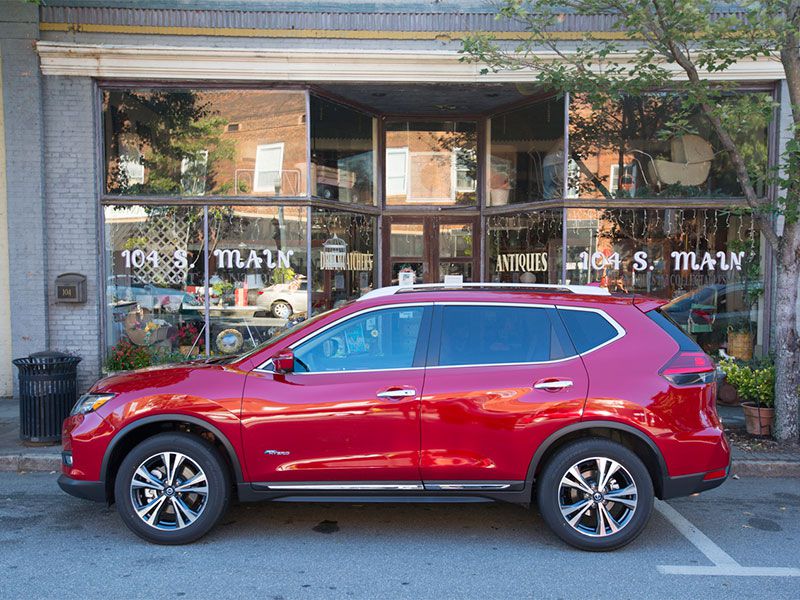
2017 Nissan Rogue hybrid exterior profile HEV23 ・ Photo by Nissan
The 2017 Rogue Hybrid represents Nissan’s biggest bet on hybrid technology to date. While Nissan has a huge commitment to electric vehicles with the Leaf, the company hasn’t seen broad success with hybrids over the years. Nissan has picked this fight carefully. The list of hybrid SUVs on the market today is surprisingly short and skewed a bit toward the luxury side of the market, where there are entries from Lexus, Infiniti, and Audi. The Rogue is one of Nissan’s best-selling vehicles, and the Toyota RAV4 Hybrid is the Rogue Hybrid’s primary competition now that the Subaru XV Crosstrek Hybrid has been discontinued. The Ford C-Max might be considered as a competitor, but it is only offered with front-wheel drive.
Exterior Styling
The Rogue enjoys a significant design refresh for the 2017 model year, both inside and out. The nose and tail have been tightened up, with a new V-Motion grille, integrated fog lamps, and LED headlamps up front on the SL and LED boomerang taillights out back. The SL trim level also gains an enormous power panoramic moonroof. We put a Palatial Ruby AWD Rogue Hybrid SL to the test over a week’s worth of driving. The gorgeous metallic red paint displayed a stunning range of color under changing light conditions, as the highlights danced across the Rogue’s dramatic lines. Subtle chrome trim on the lower grille, side rockers, and side windows is complemented by sleek roof rails.
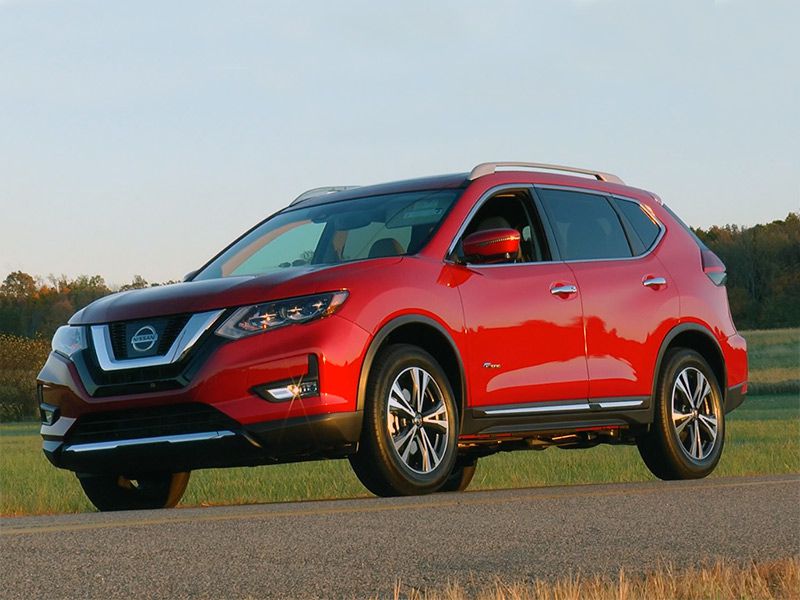
Photo by Dan Gray
Powertrain
The 2017 Nissan Rogue Hybrid is equipped with a 2.0-liter 4-cylinder engine and a 30-kW electric motor that produce a combined 176 system horsepower. The DOHC 2.0-liter engine produces 141 horsepower and 144 pound-feet of torque, while the electric motor delivers 40 HP and 118 pound-feet of torque. The hybrid control system uses a dual-clutch arrangement. Power is delivered via Nissan's Xtronic continuously variable transmission, which provides Sport and Eco modes with simulated gearing. The braking system, which helps recharge the battery, uses vented discs front and rear. The Hybrid SL is fitted with 18-inch alloy wheels. Our tester was equipped with Dunlop Grandtrek 225/60R-18 all-season tires. TireRack shows the Falken Ziex ZE001 A/S as the alternate OEM tire. Neither tire is rated as low-rolling-resistance (LRR), which is usually the hybrid norm. The highly rated Michelin Premier or Continental PureContact LRR tires may deliver slightly better fuel efficiency.
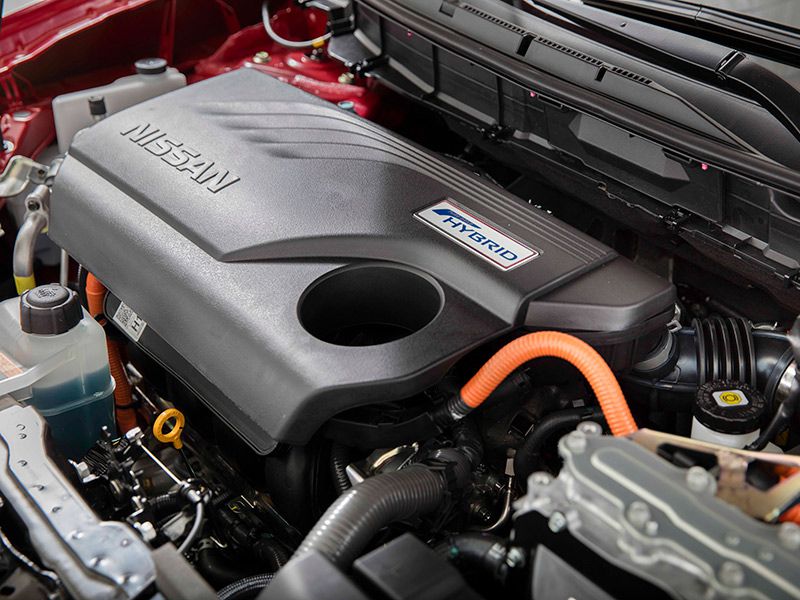
Photo by Nissan
Fuel Efficiency
Although official EPA ratings for the 2017 Rogue Hybrid were not posted at the time of testing, Nissan is aiming for 33 MPG city/35 MPG highway in the front-wheel-drive version and 31/34 with AWD. A week of testing our AWD Rogue Hybrid SL in various conditions landed slightly over 31 MPG combined. While you won’t see a huge jump in highway efficiency over the conventional Rogue, you will see a difference in town. The non-hybrid Rogue is rated at 26/33 with FWD and 25/32 with AWD. Nissan’s highway fuel efficiency targets are higher than those of the RAV4 Hybrid, which is EPA-rated at 34 city/30 highway/32 combined. How this plays out in the real world when production models meet head-to-head remains to be seen, as Toyota hybrids often outperform their official estimates.
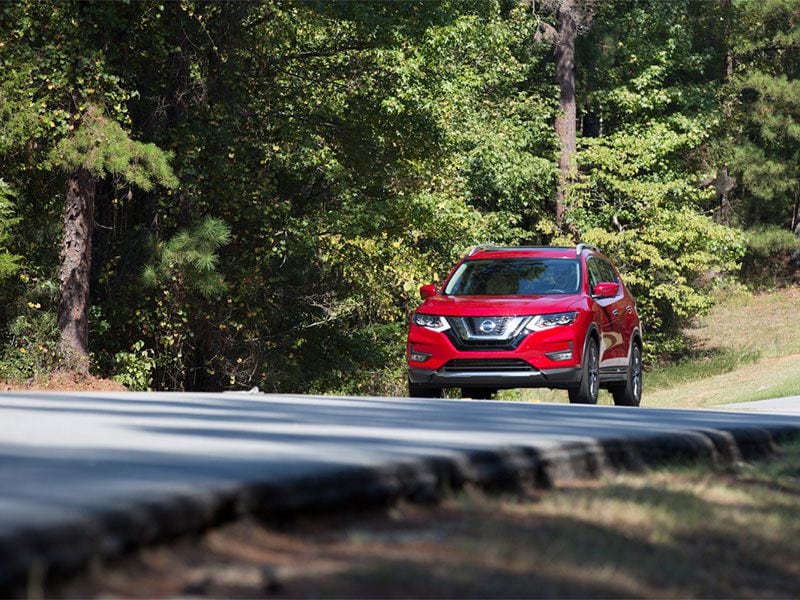
Photo by Nissan
Interior
The Rogue Hybrid SL benefits from a upscale redesigned interior. The Zero Gravity leather-upholstered front bucket seats are my favorite feature, hands down. They provide two-level quick comfort heating and the driver's seat features six-way power adjustment with power lumbar support. The Zero Gravity seats may look like standard buckets, but they provide a remarkable level of support with excellent padding. A two-hour ride with the seat heater on high made my lower back pain fade away. The beefy leather-wrapped flat-bottom steering wheel features a concise set of controls and heating. The second row provides easy entry, along with an abundance of legroom and headroom. The back seat is roomy and comfortable, but lacks a recline feature and power ports.
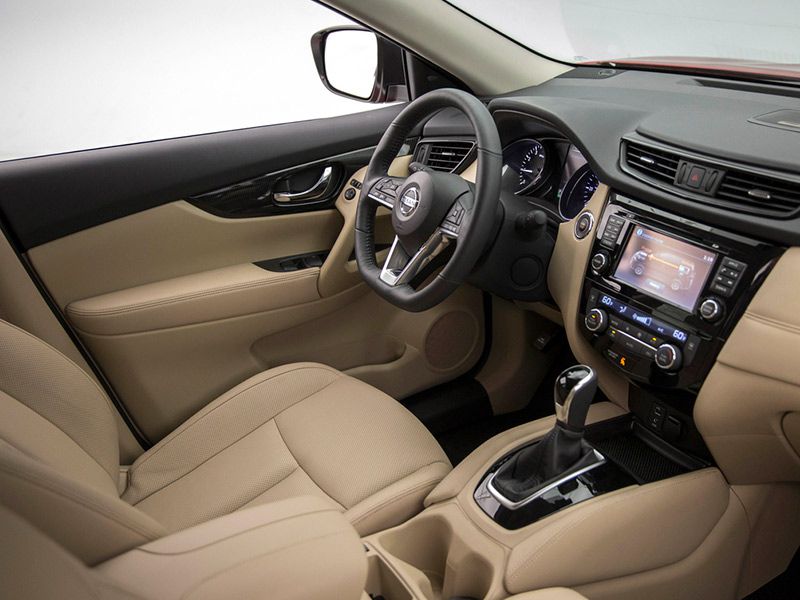
Photo by Nissan
Infotainment and Amenities
The Rogue Hybrid SL is equipped with NissanConnect, which includes navigation and Bluetooth support. The 9-speaker Bose audio system and 7-inch touchscreen integrate Pandora, iHeartRadio, Facebook Places, Google Search, Trip Advisor, and Siri Eyes Free, but not Apple CarPlay or Android Auto. Other infotainment features include SirusXM and NavWeather. (The Rogue Hybrid SV is equipped with a 6-speaker audio system with a 5-inch display.) There is a single USB port at the base of the dash, along side a single 12-volt outlet. An additional 12-volt outlet is located inside the center console. A dealer-installed 4G WiFi hotspot is offered for an additional $50. Dual-zone climate control is standard.
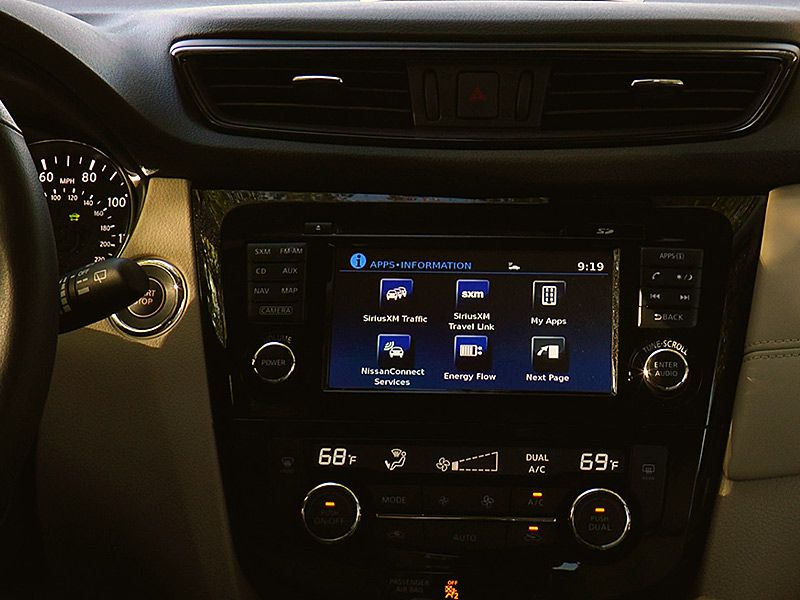
Photo by Dan Gray
Safety Technology
Safety is at the forefront with the 2017 Nissan Rogue Hybrid SL, which has a suite of safety technology that includes emergency braking. This system provides a warning should you approach the car in front of you too quickly and can activate the brakes, if necessary. The standard 4-camera Around View Monitor with moving object detection provides a convenient split screen, with backward and bird’s-eye views. Blindspot mirrors and rear cross-traffic alert are standard as well. The Rogue Hybrid SL Premium option package includes lane-departure warning/lane-departure prevention, along with adaptive cruise control. The 2016 Nissan Rogue earned the Insurance Institute for Highway Safety (IIHS) Top Safety Pick when equipped with the optional front crash prevention system. Crashworthiness is rated as Good in all five IIHS tests.
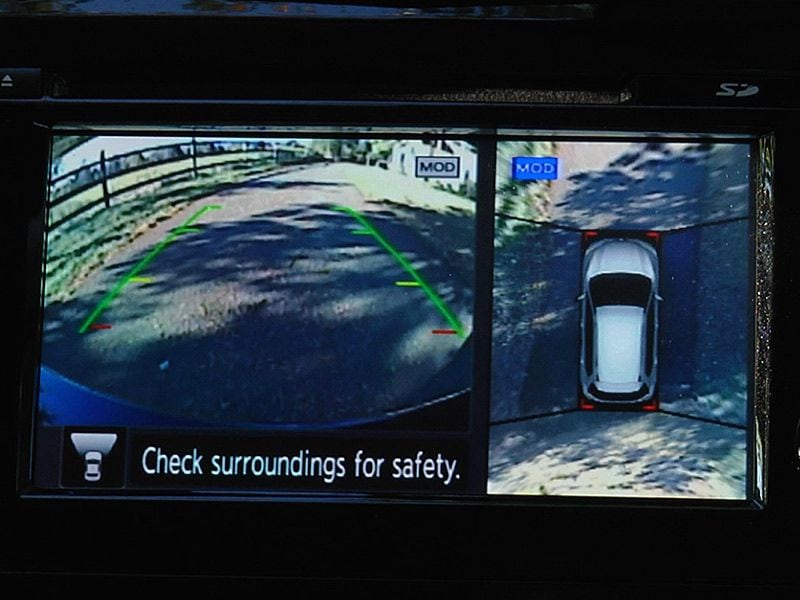
Photo by Dan Gray
Driving Impressions
The Rogue Hybrid is a relatively mild hybrid, with a modestly sized battery pack. While it glides well at speed and creeps nicely around parking lots with the engine off, it is not capable of significant acceleration or climbing inclines under pure electric power. Acceleration is reasonable, but not brisk. We saw a 0–60 mph time of around 9 seconds while in Eco Mode. Power transition is good, but there can be a bit of lag. You’ll want to drive this back to back with the Toyota RAV4 Hybrid for a direct comparison. Ride and handling are exactly what you’d expect in a high quality compact crossover. The Rogue Hybrid is smooth and pleasant to drive. No objections there. If you want something more adept at carving corners but with similar fuel efficiency, consider the Mazda CX-5.
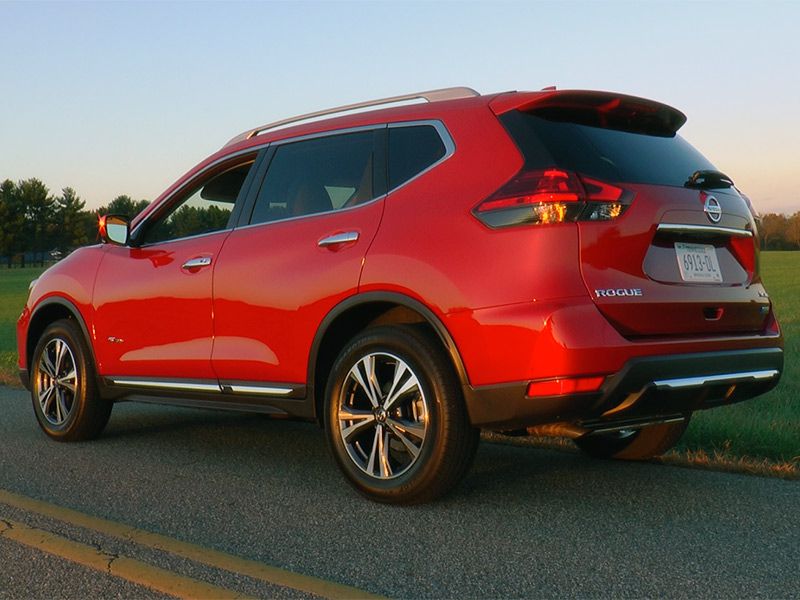
Photo by Dan Gray
Cargo
The Rogue Hybrid SL’s cargo area provides ample room and is equipped with a power motion-activated lift gate to ease loading chores. The Hybrid loses a tiny bit of storage space due to its battery, but still has 27.3 cubic feet of cargo area behind the second row and 61.4 when the 60/40 split rear seat is folded down. That’s a mere 1.1 cubic foot deficit compared to the standard Rogue, overall. An ample underfloor storage compartment provides plenty of space to stow muddy soccer cleats and other goodies away from prying eyes. (A rear cargo cover is offered for an additional $190.) A 12-volt outlet is conveniently located on the right side of the cargo area. Although the conventional Nissan Rogue is available with three row seating, the Rogue Hybrid is not.
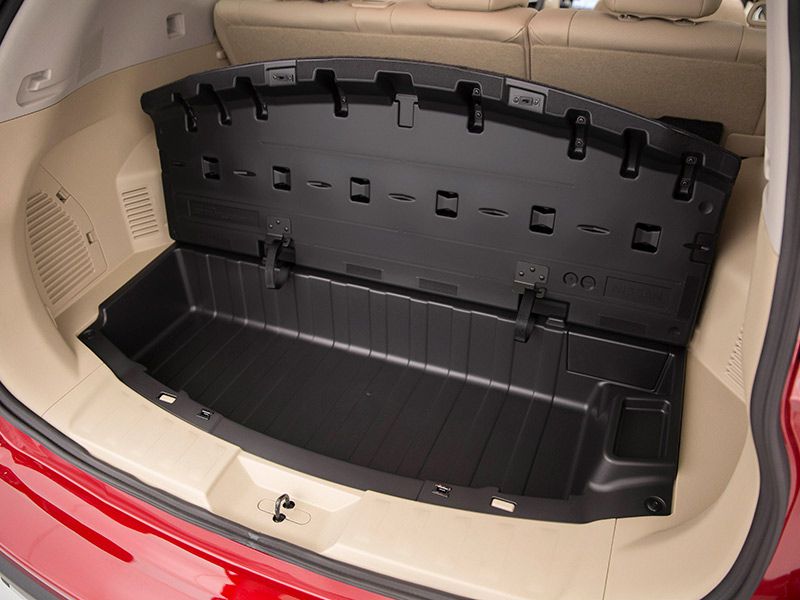
Photo by Nissan
Nissan's History with Hybrids
Hybridizing the Rogue is an important step for Nissan. The Rogue ran neck-to-neck with the Altima in sales over the first three quarters of 2016, with sales of 241,619 Rogues versus 242,321 Altimas. Rogue sales were up 13.3 percent over the same period last year, while Altima sales were down 7.7. While Nissan began selling hybrid vehicles nearly 10 years ago with the Altima Hybrid, the company is not a leader in hybrid technology with superb fuel efficiency. Case in point, the supercharged 2.5-liter 4-cylinder hybrid drivetrain currently found in the Nissan Murano Hybrid and Infiniti QX60 Hybrid delivers a modest 3 MPG bump in EPA combined fuel economy over the Murano and QX60’s naturally aspirated 3.5-liter V6. This is the same mild hybrid drivetrain used brieflly in the Pathfinder Hybrid.
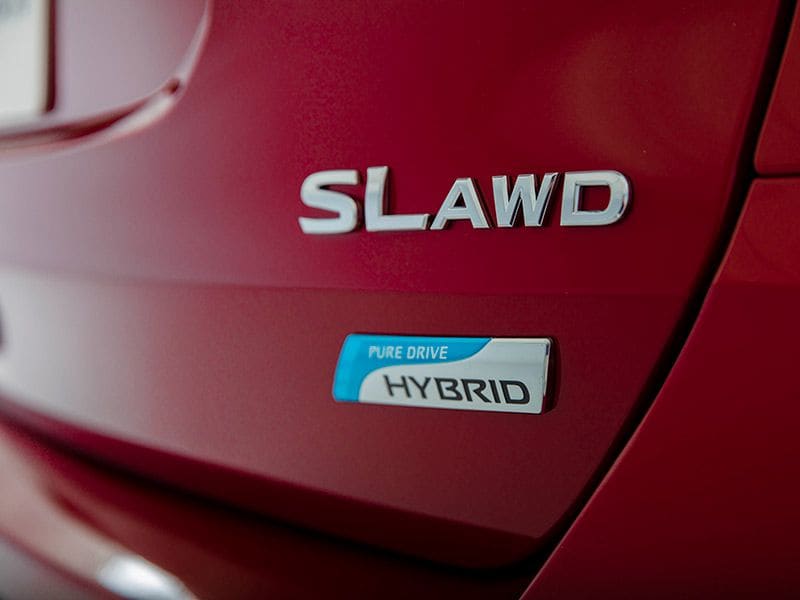
Photo by Nissan
Final Thoughts
Hybrid vehicle sales ebb and flow with the price of gasoline. When gas prices rise, folks turn to more fuel-efficient vehicles, but the recent stretch of relatively low prices has spurred SUV sales. This all may work in the Rogue Hybrid’s favor. While folks crave the versatility of a small SUV, fuel efficiency can hedge the bet. The Toyota RAV4 Hybrid is the Rogue Hybrid’s sole competition right now, but the race for small SUV efficiency is due to change dramatically with the upcoming Chevy Equinox turbodiesel. Ford may jump back in the game with a revised Escape Hybrid, should gas prices rise. For now, however, it’s a two-horse Toyota versus Nissan hybrid race. We don't have a price on the Rogue Hybrid yet, but if you’re in the saddle for long stretches, the Zero Gravity bucket seats make this Nissan a winning bet.
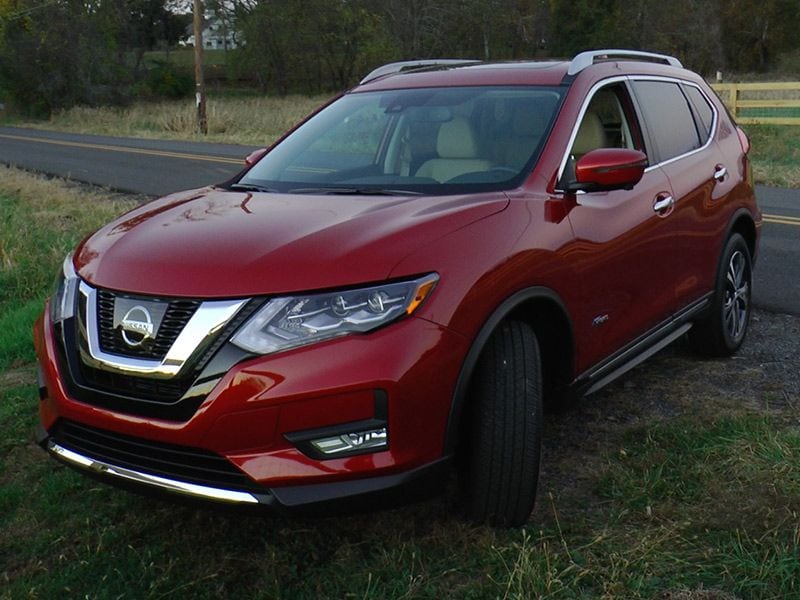
Photo by Dan Gray